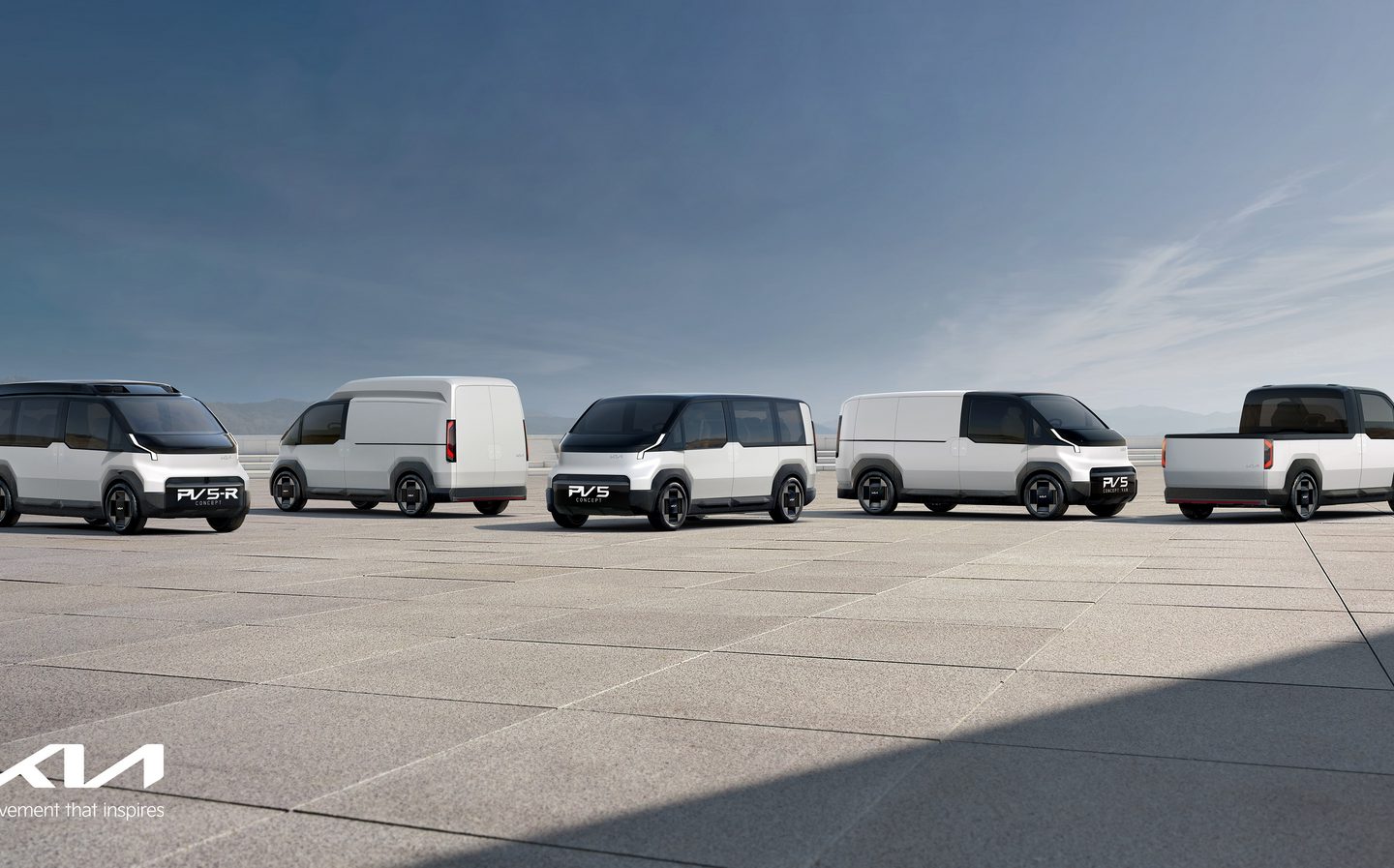Kia previews vans of the future at CES, complete with Robotaxis and switchable body parts
Don’t damage the Johnnycab, Arnie…
Kia has previewed its entry into the commercial vehicles (CV) market at the Consumer Electronics Show (CES) in Las Vegas by unveiling a range of specialist concept models designed for deliveries, ultility companies, taxi duties and more.
These concepts are designed to eventually be connected a central network that would enable a revolution in the logistics and mobility sectors, while clever modular construction means that owners can even change the shape and capability of the vehicle to suit their business needs.
PV5 concept to become production luxury MPV
The first product to launch under what Kia is calling the “Platform Beyond Vehicle” (PBV) programme will be a version of the PV5 concept, which is slated to reach production by 2025.
It will come in four main specifications for users to be able to tailor it to their needs, including Basic, Van, High Roof and Chassis Cab.
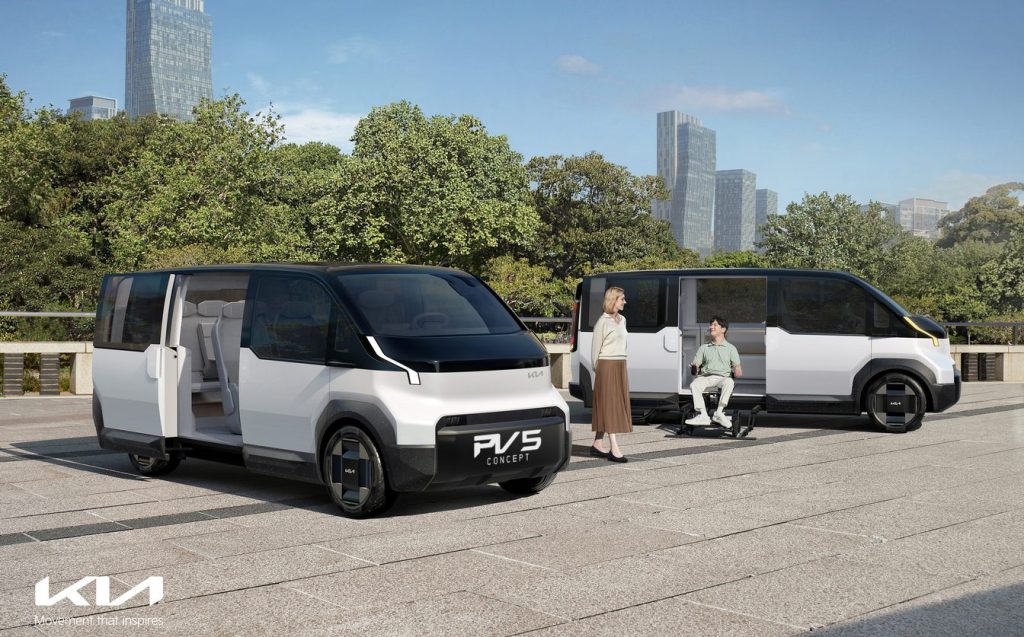
One of these, which Kia says could be used by taxi hailing and ride-sharing companies, is clearly capable of evolving into a luxury MPV, following on from a resurgence in the body style with vehicles such as the Volkswagen Multivan, Lexus LM and, from Kia’s sister brand, the Hyundai Staria.
The PV5’s large front doors are pillarless, which makes getting into and out of the vehicle easy.
Due in part to its electric vehicle construction, the PV5 has a long wheelbase (the distance between the front and rear wheels) and a flat floor, so the cabin is not only spacious but should also prove to be highly versatile.
Steering wheel as desk lamp
Up front, the dashboard design allows for a desk-like surface in the cab of the PV5, while the steering wheel can be folded to serve as a desk lamp — echoing the new Ford Transit’s multipurpose wheel design, where it folds to double up as a tray.
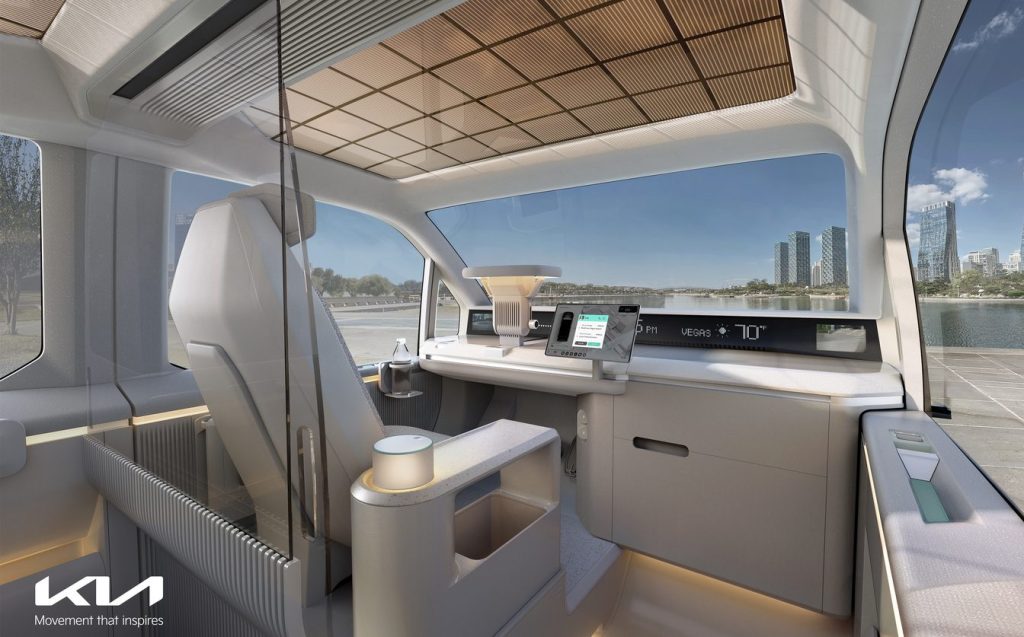
Like any self-respecting EV, the Kia PV5 features a considerable amount of sustainable material in its make-up, including bio-plastics and bio-paint, recycled PET fabrics and more.
Kia aims to develop the PV5 into a Robotaxi, providing a fully autonomous hailing experience for passengers.
More PBVs to follow PV5
Following on from the PV5 and phase one, Kia will launch a larger PV7 on the same PBV underpinnings, followed by a short-distance-logistics specialist vehicle called the PV1.
The cleverest thing about all the PBVs, potentially, is their integration into a business network, and also their modularity.
Using software-to-everything (SDx) technology, Kia wants the PBVs to be built around a dedicated business system, which would blend together the vehicles themselves with management software and other future technologies to deliver one commercial solution for operators.
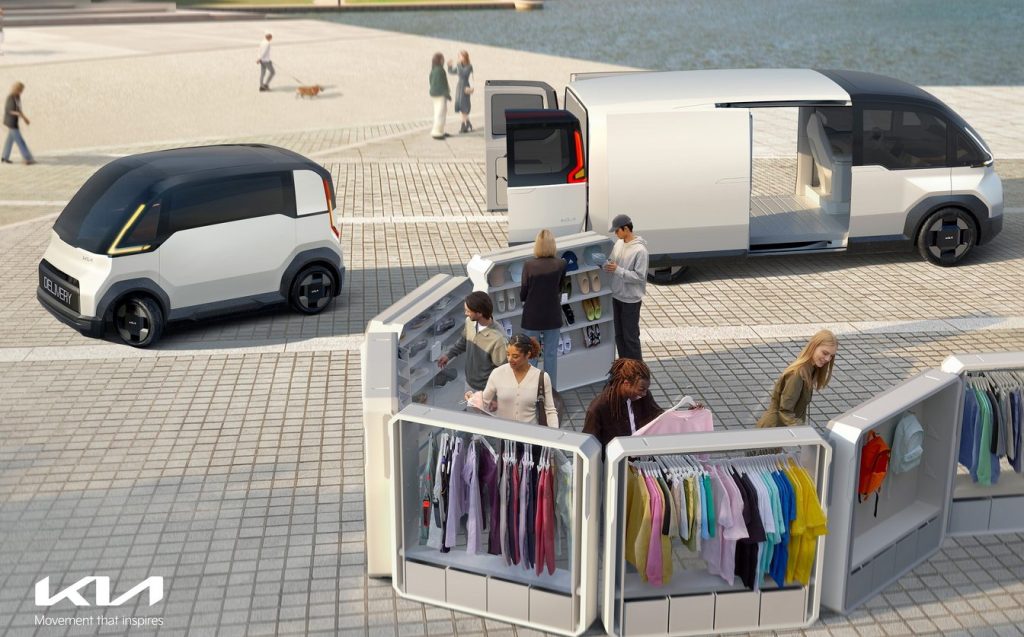
The ultimate goal here is that, during a second phase of the PBV plan, the vehicles will evolve into AI-based mobility platforms, before becoming part of a single “smart city” operating system as self-driving, connected vehicles in phase three. All very sci-fi, we’re sure you agree.
Ho Sung Song, Kia’s president and CEO said: “Kia’s PBV business represents our vision of going beyond the traditional concept of automobiles by fulfilling the unmet needs of diverse customers and communities through optimised vehicles and services catering to specific market and business circumstances.
“Kia PBVs will be an enabler of business innovation thanks to our customer-centric management system, EV mass production expertise, and the Hyundai Motor Group’s rapidly developing SDx strategy and related future businesses. We are excited to show that we are fully prepared to become the first mover in the global PBV market.”
Transformers: CVs in disguise
It’s the Easy Swap technology we like most, though. Using hybrid electromagnetic and mechanical couplings, bits of the bodies of the PBVs can be “bolted” or “unbolted” to change the shape and operating capabilities of the vehicle in question.
So, behind a fixed cab or “driver zone”, these interchangeable upper bodies and “life modules” can mean you’re driving a taxi in the day, a delivery van at night and then a personal recreation vehicle for the weekends — all using the same single platform.
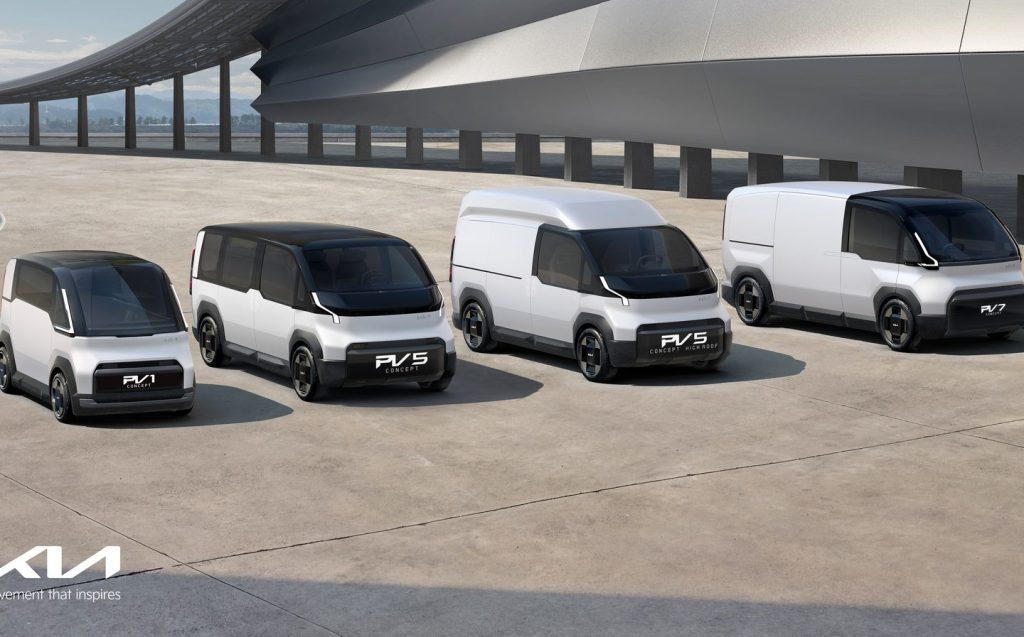
Kia says this modularity is possible thanks to a weldless body structure assembly it calls “Dynamic Hybrid”, in which the length of moveable members in the frame can be flexibly adjusted according to the vehicle’s usage needs.
Beyond this, Kia says the design of the PBVs shown at CES 2024 is inspired by “robust, simple and clever tools”, and hasn’t been chosen purely for its aesthetic value.
Related articles
- If you were interested in the new Kia commercial vehicles, you might like to read our review of the Kia EV9
- If vans are more your thing, do read our Ford E-Transit review
- Here’s a recent look at some of the best seven-seat cars on sale
Latest articles
- Seven great automotive events to visit this summer, from F1 to art and champagne
- Watch new Porsche 911 GT3 smash Nürburgring record for manual cars
- Skoda Elroq 2025 review: Czech carmaker can’t seem to miss with its electric family cars
- Five best electric cars to buy in 2025
- Should I buy a diesel car in 2025?
- F1 2025 calendar and race reports: The new Formula One season as it happens
- Zeekr 7X AWD 2025 review: A fast, spacious and high tech premium SUV — but someone call the chassis chief
- Denza Z9GT 2025 review: Flawed but sleek 1,062bhp shooting brake from BYD’s luxury arm
- Extended test: 2024 Renault Scenic E-Tech review


